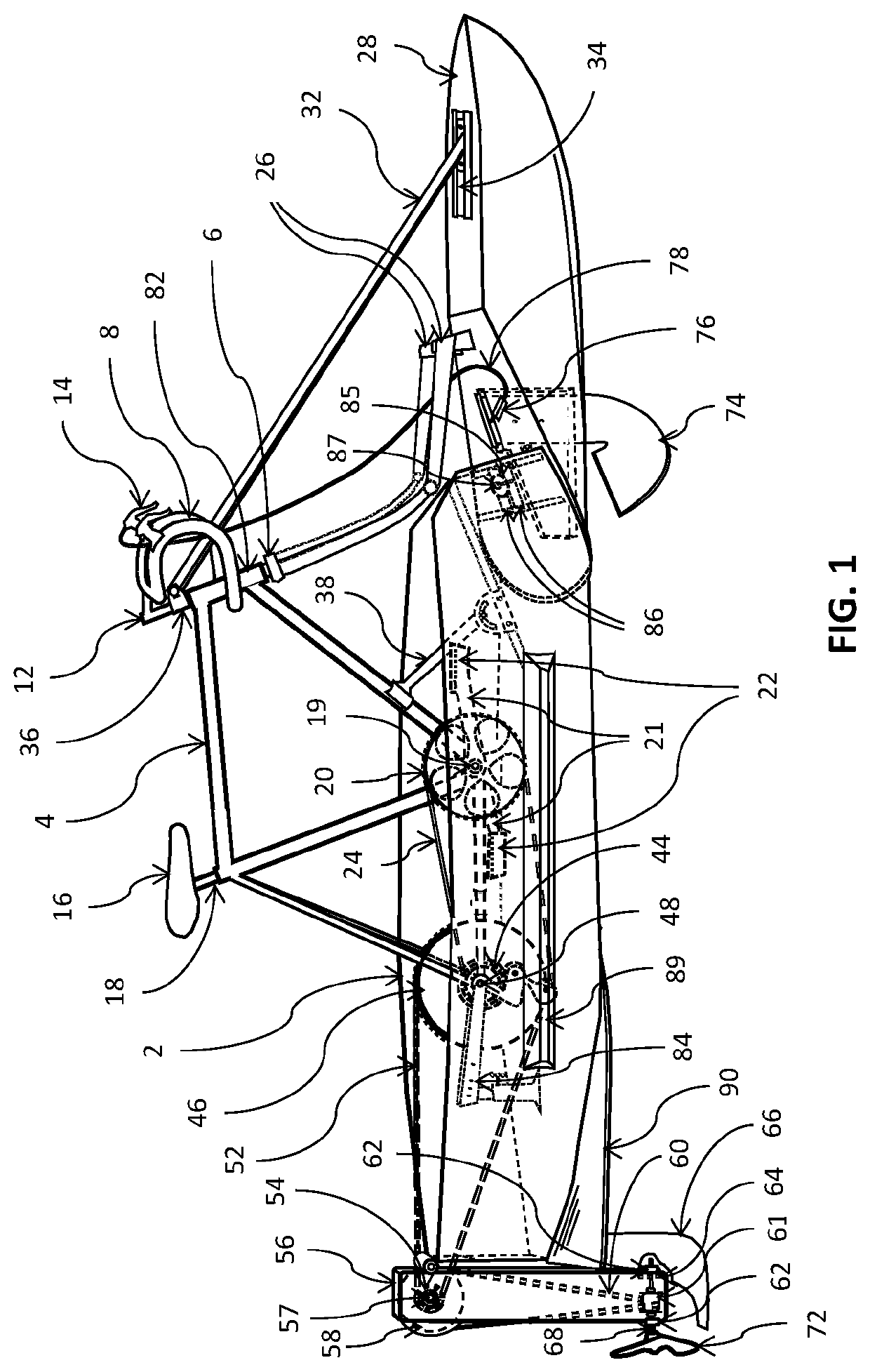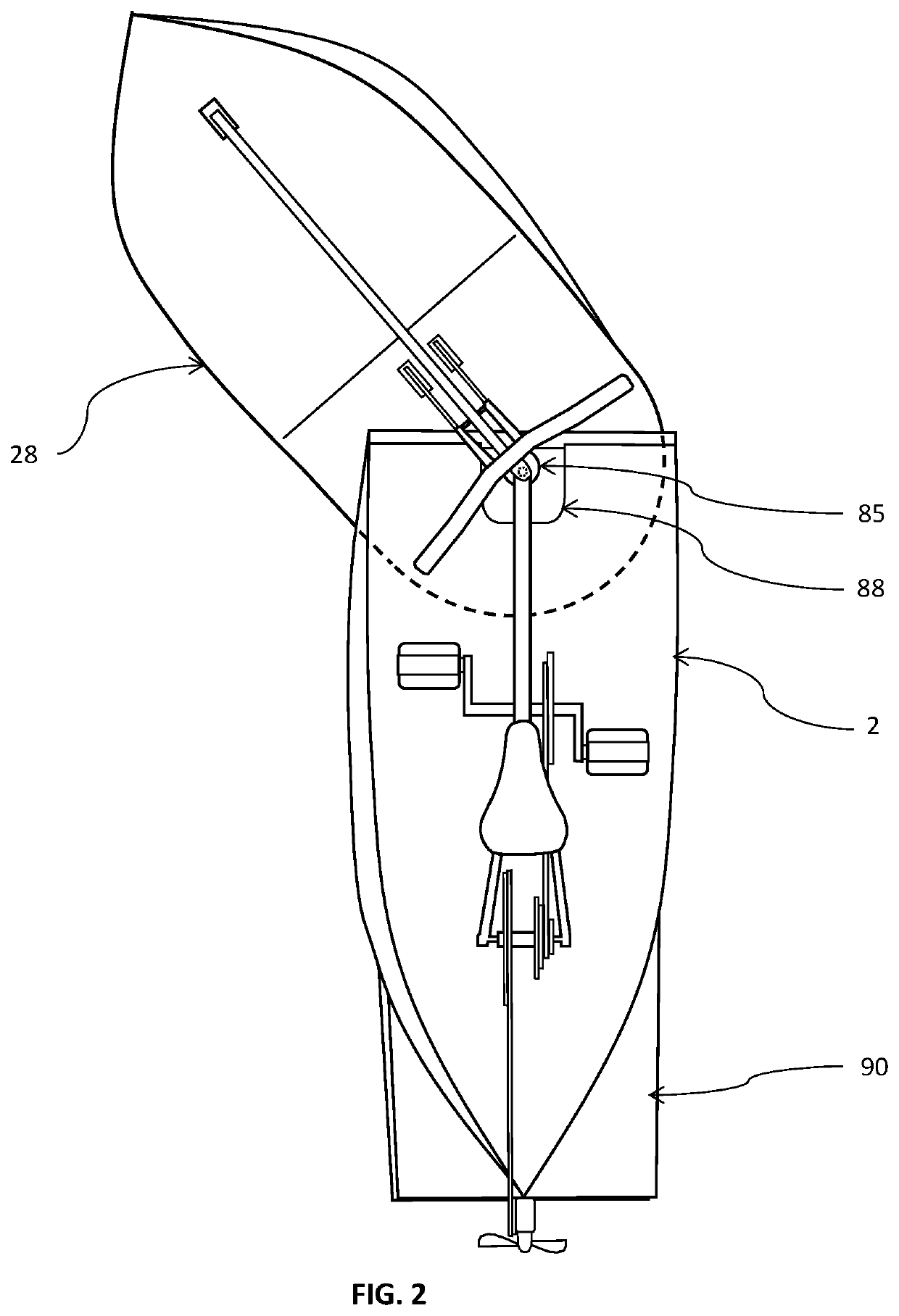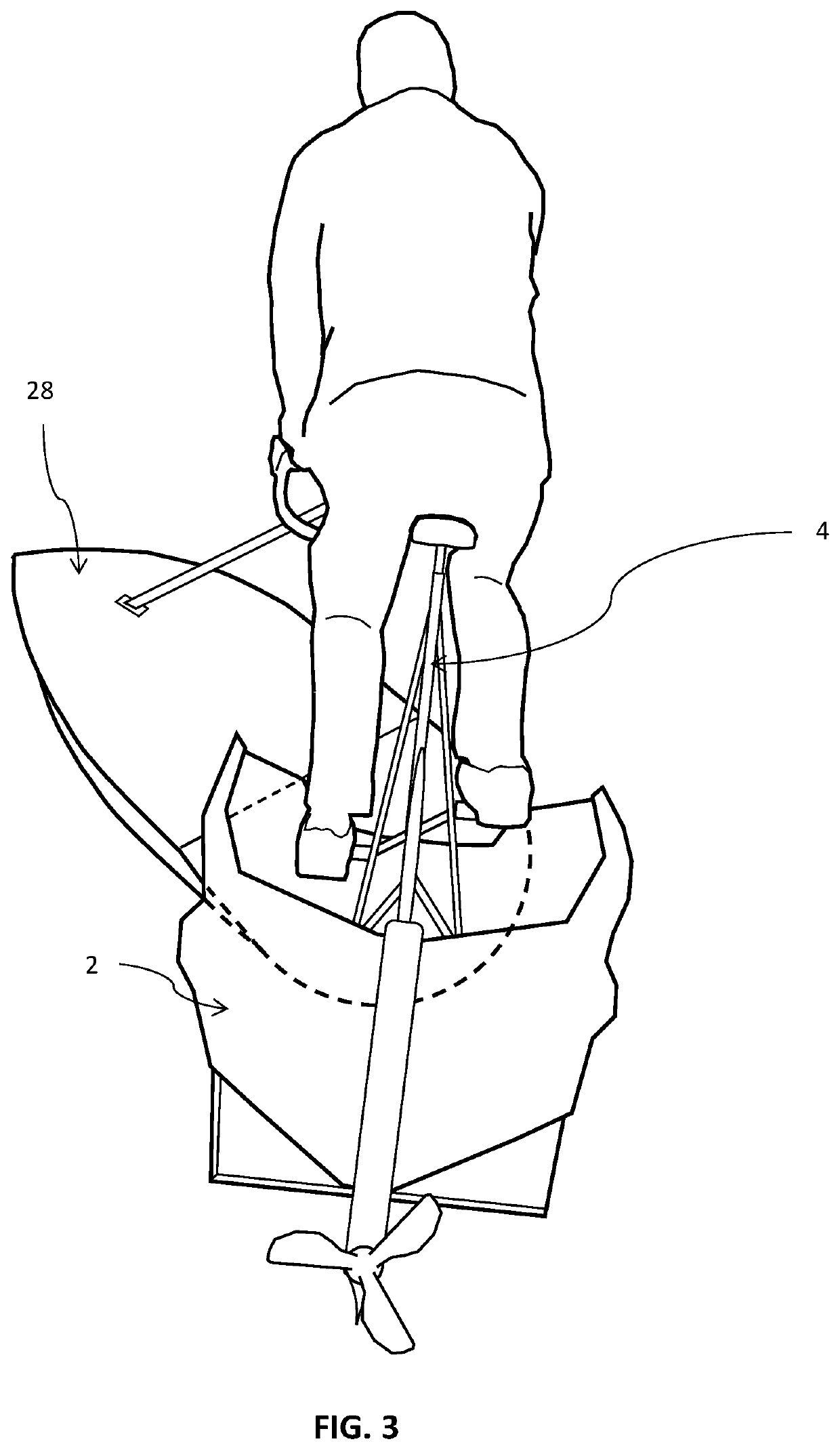Watercraft with Collinear Flotation Elements
a technology of collinear flotation and watercraft, which is applied in the direction of marine propulsion, special-purpose vessels, vessel construction, etc., can solve the problems of lowering top speed, slowing speed, hampered maneuverability, etc., and achieves the effect of minimizing turbulence and water resistance, facilitating maneuverability, and maximizing the change in weight distribution caused by the movement of the pivot axis alon
- Summary
- Abstract
- Description
- Claims
- Application Information
AI Technical Summary
Benefits of technology
Problems solved by technology
Method used
Image
Examples
Embodiment Construction
[0017]In a preferred embodiment illustrated in FIG. 1, the invention includes a main flotation element 2 to which a conventional bicycle frame 4 is adjustably attached. The main flotation element 2 is constructed of plastic, or plastic and fiber composite materials, with optional metal reinforcement. A bicycle fork assembly 6 is pivotally attached to the bicycle frame 4. A handlebar 8 with an attached stem riser 12 and a latch release control handle 14 are adjustably attached to the fork assembly 6. A seat 16 and seat post 18 are adjustably attached to the bicycle frame 4.
[0018]The fork assembly 6 is rigidly attached to adjustable brackets 26 on a fore flotation element 28 which is located forward of the main flotation element 2. The fore flotation element 28 is constructed of plastic, or plastic and fiber composite materials, with optional metal reinforcement. The lower end of a support 32 is adjustably attached to a surface bracket 34 mounted on the top deck of the fore flotation ...
PUM
| Property | Measurement | Unit |
|---|---|---|
| angle | aaaaa | aaaaa |
| gravity | aaaaa | aaaaa |
| hydraulic resistance | aaaaa | aaaaa |
Abstract
Description
Claims
Application Information
 Login to View More
Login to View More - R&D
- Intellectual Property
- Life Sciences
- Materials
- Tech Scout
- Unparalleled Data Quality
- Higher Quality Content
- 60% Fewer Hallucinations
Browse by: Latest US Patents, China's latest patents, Technical Efficacy Thesaurus, Application Domain, Technology Topic, Popular Technical Reports.
© 2025 PatSnap. All rights reserved.Legal|Privacy policy|Modern Slavery Act Transparency Statement|Sitemap|About US| Contact US: help@patsnap.com



